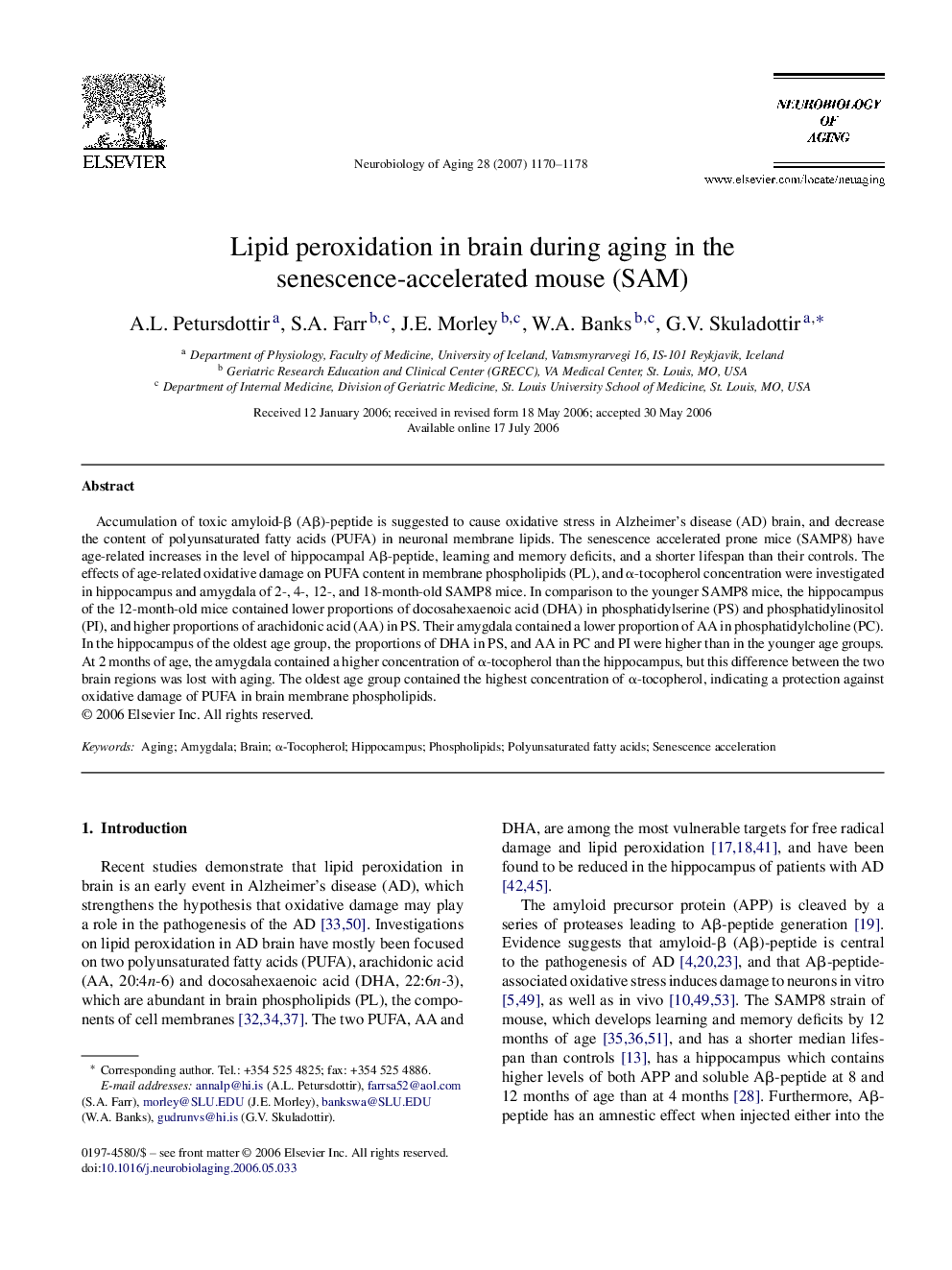| کد مقاله | کد نشریه | سال انتشار | مقاله انگلیسی | نسخه تمام متن |
|---|---|---|---|---|
| 331218 | 1433656 | 2007 | 9 صفحه PDF | دانلود رایگان |

Accumulation of toxic amyloid-β (Aβ)-peptide is suggested to cause oxidative stress in Alzheimer's disease (AD) brain, and decrease the content of polyunsaturated fatty acids (PUFA) in neuronal membrane lipids. The senescence accelerated prone mice (SAMP8) have age-related increases in the level of hippocampal Aβ-peptide, learning and memory deficits, and a shorter lifespan than their controls. The effects of age-related oxidative damage on PUFA content in membrane phospholipids (PL), and α-tocopherol concentration were investigated in hippocampus and amygdala of 2-, 4-, 12-, and 18-month-old SAMP8 mice. In comparison to the younger SAMP8 mice, the hippocampus of the 12-month-old mice contained lower proportions of docosahexaenoic acid (DHA) in phosphatidylserine (PS) and phosphatidylinositol (PI), and higher proportions of arachidonic acid (AA) in PS. Their amygdala contained a lower proportion of AA in phosphatidylcholine (PC). In the hippocampus of the oldest age group, the proportions of DHA in PS, and AA in PC and PI were higher than in the younger age groups. At 2 months of age, the amygdala contained a higher concentration of α-tocopherol than the hippocampus, but this difference between the two brain regions was lost with aging. The oldest age group contained the highest concentration of α-tocopherol, indicating a protection against oxidative damage of PUFA in brain membrane phospholipids.
Journal: Neurobiology of Aging - Volume 28, Issue 8, August 2007, Pages 1170–1178